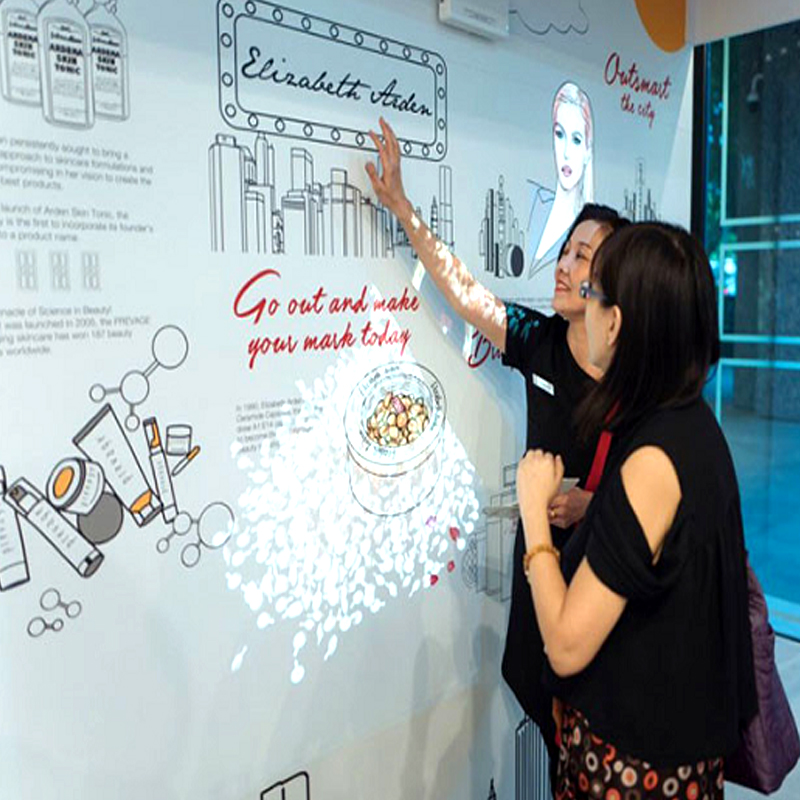Museums are no longer just static spaces for observing artifacts; they have evolved into dynamic environments where technology enhances the visitor experience. One of the most exciting innovations in this space is the use of LiDAR interactive projection walls. These cutting-edge installations combine LiDAR (Light Detection and Ranging) technology with immersive animations and interactive displays, creating engaging and educational experiences for visitors.
In this blog, we’ll explore how LiDAR-powered interactive walls are revolutionizing museum exhibits, the benefits they offer, and why they are becoming a must-have feature in modernexhibition hall culture walls.
What is a LiDAR Interactive Projection Wall?
A LiDAR interactive projection wall is a large-scale display that uses LiDAR sensors to detect and track the movements of visitors in real-time. These movements are then translated into interactive animations or projections on the wall, creating a seamless blend of physical and digital experiences.

Key Components:
- LiDAR Sensors: These sensors emit laser pulses to measure distances and create a 3D map of the surrounding environment. They can detect even the slightest movements with high precision.
- Projection System: High-resolution projectors display dynamic animations, videos, or interactive content on the wall.
- Interactive Software: Custom software processes the LiDAR data and generates real-time responses to user interactions.
Applications in Museums
LiDAR interactive projection walls are versatile and can be used in various ways to enhance museum exhibits:
1. Immersive Storytelling
Museums can use LiDAR walls to bring historical events, cultural stories, or scientific concepts to life. For example, a wall could project a 3D animation of ancient civilizations, allowing visitors to “walk through” history by interacting with the display.
2. Gamified Learning
Interactive walls can turn learning into a fun and engaging activity. Visitors can solve puzzles, play educational games, or participate in virtual scavenger hunts, all while exploring the museum’s content.
3. Personalized Experiences
LiDAR technology can track individual visitors and tailor the content based on their movements or preferences. For instance, a wall could display information about artifacts that a visitor shows interest in, creating a personalized tour.
4. Dynamic Art Installations
Art museums can use LiDAR walls to create interactive art pieces that respond to visitors’ gestures or movements. This adds a new dimension to the artwork and encourages active participation.

Benefits of LiDAR Interactive Walls
1. Enhanced Visitor Engagement
Interactive walls captivate visitors’ attention and encourage them to spend more time exploring the exhibits. This leads to a deeper understanding and appreciation of the content.
2. Versatility
LiDAR walls can be customized to suit any theme or subject, making them suitable for history, science, art, and children’s museums.
3. Space Efficiency
Unlike traditional exhibits, interactive walls don’t require physical artifacts or large display cases. This makes them ideal for museums with limited space.
4. Memorable Experiences
The immersive and interactive nature of LiDAR walls leaves a lasting impression on visitors, making their museum visit unforgettable.
Why Choose CPJROBOT for LiDAR Solutions?
At CPJROBOT, we specialize in the research and manufacturing of POE LiDAR technology. Our advanced LiDAR sensors are designed to deliver high precision, reliability, and seamless integration with interactive systems. Whether you’re looking to create a stunning exhibition hall culture wall)or a state-of-the-art motion-sensing animation display, our solutions are tailored to meet your needs.
Ready to transform your museum or exhibition space with cutting-edge LiDAR technology? Contact CPJROBOT today to learn more about our POE LiDAR solutions and how they can elevate your interactive exhibits. Let’s create unforgettable experiences together!
Keywords: LiDAR interactive projection wall, museum technology,POE LiDAR, interactive museum exhibits, CPJROBOT, immersive storytelling, gamified learning, dynamic art installations.







